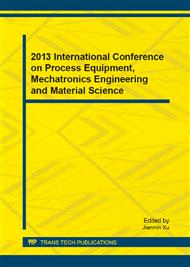[1]
S. Srikanth, B. Ravikumar, Swapan K. Das, etc. Analysis of failures in boiler tubes due to fireside corrosion in a waste heat recovery boiler[J]. Engineering Failure Analysis, 2003,10(1):59-66.
DOI: 10.1016/s1350-6307(02)00030-4
Google Scholar
[2]
LIU Zhengning, LIU Yang , TAN Houzhang, etc. Study on Corrosion Mechanism of Economizer of Waste Heat Boilers[J]. Journal of Chinese Society of Power Engineering, 2010,30(7):508-511.
Google Scholar
[3]
Dominik Möst, Holger Perlwitz.Prospects of gas supply until 2020 in Europe and its relevance for the power sector in the context of emission trading[J]. Energy,2009,34(10):1510-1522.
DOI: 10.1016/j.energy.2009.06.045
Google Scholar
[4]
Suk-Jae Jeong,Kyung-Sup Kim, Jin-Won Park, etc. Economic comparison between coal-fired and liquefied natural gas combined cycle power plants considering carbon tax: Korean case[J]. Energy,2008,33(8):1320-1330.
DOI: 10.1016/j.energy.2008.02.014
Google Scholar
[5]
ZHAO Kui. Research of Utilization of Gas-steam Combined Cycle Generating Unit[J]. Energy and Energy Conservation, 2012,10:123-124.
Google Scholar
[6]
GAO He li. Analysis on the quality of the flue gas emissions of LNG power plant[J].Gas Turbine Technology, 2008,21(14):60-62.
Google Scholar
[7]
Asami K,Kikuchi M. In-depth distribution of rusts on a plain carbon steel and weathering steels exposed to coastal-industrial atmosphere for 17 years[J].Corrosion Science,2003,45(11): 2671-2688.
DOI: 10.1016/s0010-938x(03)00070-2
Google Scholar
[8]
Xiao Jimei. Metal corrosion at the effect of stress [M].Beijing: Chemical Industry Press,1990,87.
Google Scholar
[9]
ZHANG Ming feng, CHEN Xue dong,GAO Zeng liang. Investigation Progress on Stress Corrosion for Carbon Steel and Low Alloy Steel in Carbonate Solution[J]. Pressure vessel Technology, 2007,24(12):42-52,61.
Google Scholar
[10]
R. N. Parkins, S. Zhou. The Stress Corrosion Cracking of C-Mn Steel in CO2-HCO3--CO32- Solutions.I: Stress Corrosion Data[ J] . Corrosion Science,1997, 39( 1): 159-173.
DOI: 10.1016/s0010-938x(96)00116-3
Google Scholar
[11]
R. N. Parkins, W. K. Blanchard Jr., B. S. Delanty. Transgranular SCC of High-Pressure Pipelines in Contact with Solutions of Near Neutral pH[J]. Corrosion, 1994, 50(5):394-408.
DOI: 10.5006/1.3294348
Google Scholar
[12]
R.G.I. Leferink, W.M.M. Huijbregts. Nitrate stress corrosion cracking in waste heat recovery boilers[J].Anti-Corrosion Methods and Materials, 2002, 49(2):118-126.
DOI: 10.1108/00035590210419362
Google Scholar
[13]
A.Kharafi F., M. Ateya, G. Abdallah R. M. . Electrochemical behavior of low carbon steel in concentrated carbonate chloride brines[J]. J. of App. Electrochemistry, 2002, 32(12):1363-1370.
DOI: 10.1023/a:1022684930409
Google Scholar
[14]
Ke Wei,Yang Wu. Application of Corrosion Science and Technology and Failure Case[M]. Beijing: Chemical Industry Press, 2006:473-492.
Google Scholar
[15]
Krautschick H.J., Grabke H.J., Diekmann W. .The effect of phosphorous on the mechanism of intergranular stress corrosion cracking of mild steels in nitrate solutions[J]. Corrosion Science, 1988, 28(3): 251-258.
DOI: 10.1016/0010-938x(88)90108-4
Google Scholar
[16]
JIANG Qiuzhi, WANG Jinrui. Manual of metal material used in coal-fired power plants[M]. Beijing: China Electric Power Press, 2001:91.
Google Scholar
[17]
Beijing Non-ferrous Metallurgical Design and Research Institute. Design and Operation of Heat Recovery Steam Generator[M].Beijing: Metallurgical Industry Press,1982:324-383.
Google Scholar


